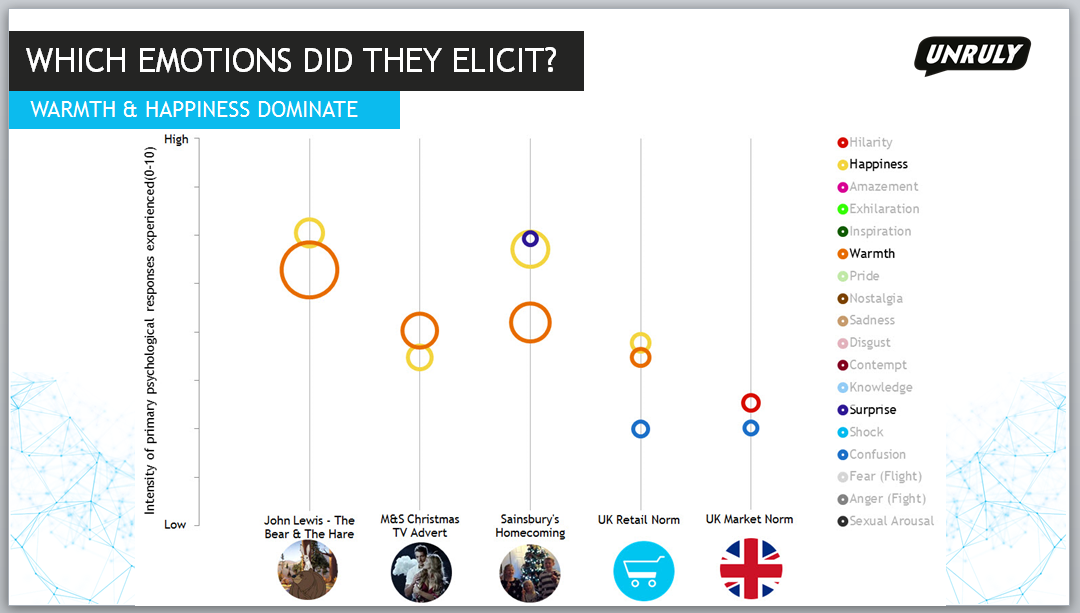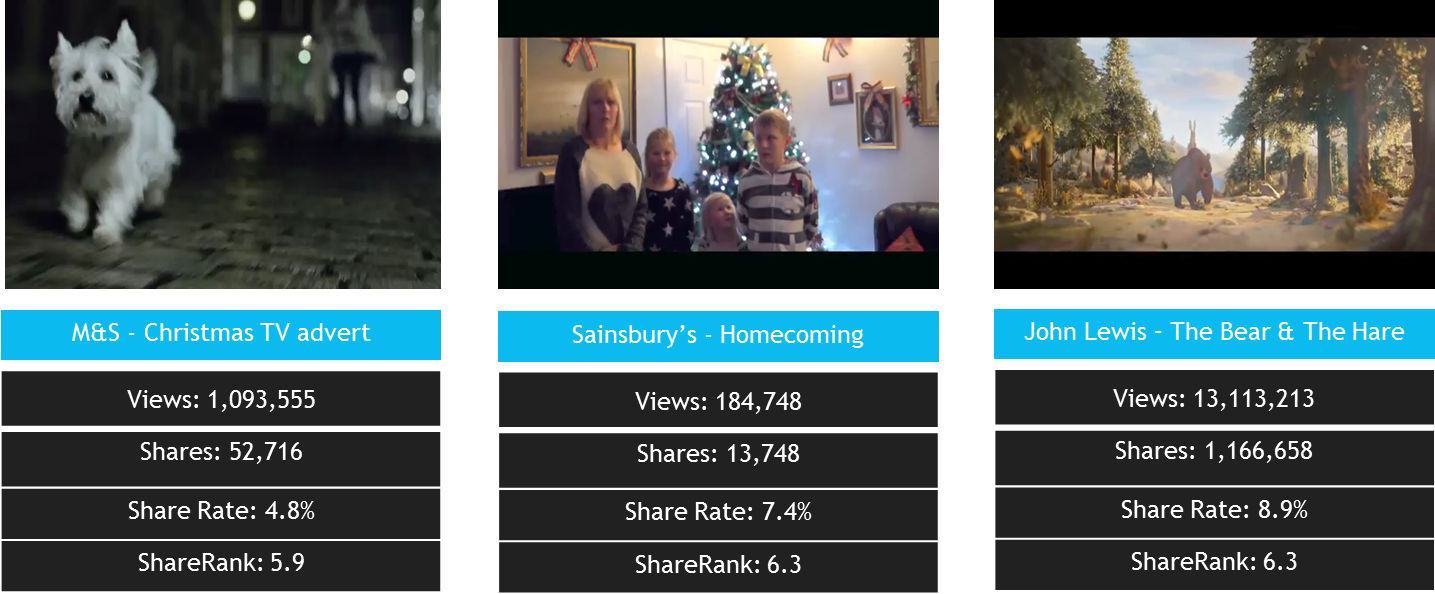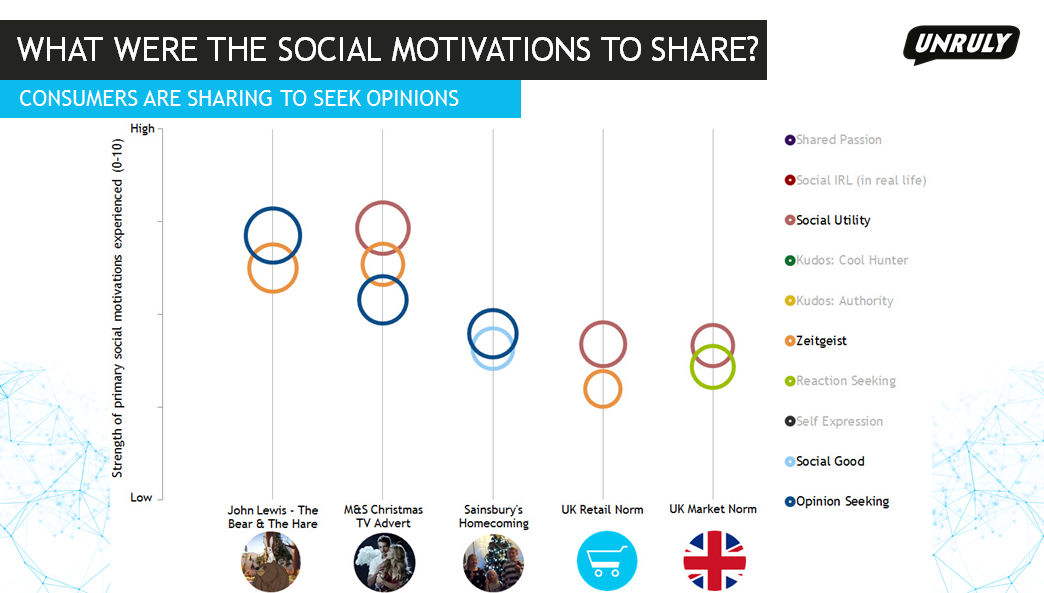8 Tips On How To Create The Perfect Christmas Ad
Christmas has arrived! Sure, it may be more than a month till Jesus’ birthday, but John Lewis has just unleashed its festive offering upon the world. Hooray!
Yep, be prepared to fall in love with a little penguin called Monty, but be warned: it could make your eyes water.
The UK retail store’s commercials have become as much a part of Christmas as turkey, family squabbles and your gran falling asleep after one too many sherries. So much so, it’s annual festive fare has become the unofficial start of the Yuletide period. And, quite frankly, we can’t wait.
Sure, some Ebeneezers will be grumbling ‘humbug’ under their breaths at the faintest hint of a bauble or Christmas jingle, but consumers are already feeling feverishly festive.
According to retail research agency Shoppercentric, one in three of us have started our Christmas shopping by September at the latest, while ‘Christmas’ has been the most popular search item on the John Lewis website since September 3.
And with the average family spending £835 on Christmas (source: Yahoo), for brands looking for a little bit extra in their stockings this holiday season, creating the right commercial is high up Santa’s wishlist.
Last year John Lewis’s ad “The Bear and The Hare” was the number one UK Christmas ad, attracting more than 1.65 million shares online. The £7 million ad helped boost sales by 6.9 per cent on the previous year.
However, this year John Lewis faces some stiff competition in the UK alone, with Waitrose and Sainsbury’s both expected to go head to head with the retail giant over the next couple of months.
And with good reason. The opportunity to engage online shoppers at scale is huge, with Christmas ads last year generating twice as many shares as this year’s Super Bowl.
But not everyone gets it right. For every Christmas hit, there are hundreds of turkeys. So what can advertisers do to make their holiday ads a Christmas star?
Using evidence taking from our predictive algorithm Unruly ShareRank, we look at 8 things advertisers can do to turn their stocking filler into a Christmas star at the top of the tree.
Enjoy!
1. Think less about creative appeal and more about emotional appeal
One of the key factors which dictates whether an ad attracts 100 shares online or a million is the strength of the emotions it elicits from its audience. The stronger the emotional response, the more likely they are to reach for the share button.
Therefore advertisers should be trying to make people laugh out loud rather than chuckle or gasp rather than raise an eyebrow.
This is even more crucial during the Christmas period, when people are shopping with their hearts rather than their heads.
If you look at two of the top three most shared global ads of 2013 you can see what I mean. The number one ad, “Real Time Giving” from Canadian airline WestJet, attracted more than 2.17 million shares by showing the joy people feel when they receive (and give) presents – especially when it’s unexpected.
John Lewis’s third-placed “Bear and The Hare” follows the same formula as most of their ads: sappy acoustic soundtrack sung by a UK artists, sentimental story with a slight twist. But it’s how it makes you feel. John Lewis Christmas ads are like the Marmite of ads: you either love them or you hate them.
I’ve not met many people who don’t feel strongly either way. That raw emotional power is driving a lot of discussion and serious word of mouth.
2. Try and spread some warmth and happiness
So which emotions should you aim for? Well, if you take a look at our Unruly ShareRank studies of some of the most shared UK Christmas ads of last year – M&S (11th), Sainsbury’s (15th) and John Lewis (3rd) – you’ll see there’s definitely a pattern.
As you can see from the Unruly ShareRank bubble graph above, like most retail ads, all three videos elicited happiness and warmth, but at much higher levels than the UK retail average.

So how did they perform?

As you can see from the image above, John Lewis and Sainsbury’s were as intrinsically shareable as each other with a ShareRank score of 6.3. This means that if they were both launched with exactly the same distribution strategy then then would have attracted the same share rate. M&S, which elicited lower levels of warmth and happiness from its audience, attracted a lower share rate.
Alternatively, brands looking for cut-through may want to step away from the warmth and happiness and try something different.
3. Think hard before trying to make a funny commercial
Advertisers may be obsessed with making us laugh, but, as any comedian will tell you, it’s probably the hardest job on the planet (other than being Santa, of course).
Everyone loves to laugh, but brands should remember that hilarity is the hardest emotional response to evoke strongly, as different groups of viewers are likely to find different things funny. (How else do you explain the mind-boggling success of Michael McIntyre?)
Different genders find different things funny, as do different age groups, and humour doesn’t always translate across borders. To be an effective driver of sharing, brands should evoke hilarity at a 9 or a 10 out of 10.
There are 8 other emotional responses that a brand can use to drive sharing other than hilarity (the intense versions of happiness, nostalgia, pride, inspiration, amazement, sadness, exhilaration and warmth).
And it’s often easier for brands to hit a nine or a ten with these emotions than with hilarity.
Furthermore, brands seeking to evoke intense hilarity among their target group will often need to push the boundaries to such an extent that they go too far for some viewers, who will be turned off by the content, like Harvey Nichols’ “Sorry, I Spent It On Myself” campaign or Kmart’s “Show Your Joe”.
This isn’t necessarily a problem, as long as brands consciously consider who they are likely to attract and who they are likely to turn off with their ad.
4. Don’t be negative
It’s the season of goodwill, but that does not stop some advertisers from trying to crash the party.
Last year Asda used its ads to attack its supermarket rivals (hardly the Xmas spirit) and focused their message on price. It’s a risky strategy that did not pay out for the supermarket chain. Its best-performing ad (Snowmen) managed fewer than 500 shares.
Christmas is a time when people tend to splash out. You spend all year watching the pennies, so it’s nice to treat your family if you can.
Another brand that went for a slightly less Christmassy angle was Harvey Nichols. Its “Sorry, I Spent It On Myself” campaign was certainly a welcome respite from the usual Christmas fare, giving it cut-through, and its risky strategy was certainly loved by the Cannes Lions judges who gave it 4 Grand Prix awards, but online consumers were less impressed.
The ad managed less than 30,000 shares and was well behind the pacesetters, finishing 14th in the race for the Xmas No.1.
5. Reuse and recycle
Three had one of the biggest hits of 2013 with its brilliant Pony ad. It followed it up with a Christmas version at the end of the year – with snow, a jingly sound track and some tinsel. A smart way to reuse and recycle popular content.
Although the ad did not repeat the same success as the original, it did manage a very healthy 106K shares, more than brands such as M&S, Asda, Tesco and Harvey Nichols.
6. Don’t release it too early
KMart attracted a ton of criticism last year when it unveiled its first Christmas ad in early September, before some children had even returned to school after the summer break.
The US discount store had the perfect answer by releasing an ad campaign called “Not A Christmas Commercial” which mocked its error. The ad has so far racked up more than 4 million views.
7. Try using everyday heroes rather than celebrities
The stars were certainly out last Christmas, with celebs including actress Helena Bonham Carter, TV presenters Ant and Dec, model Dave Gandy and internet star Grumpy Cat all featuring in Xmas commercials.
But how many finished in the top 10 most shared Christmas ads last year? Just one – Grumpy Cat’s ad for Friskies, with more than 330,000 shares.
The highest placed star-studded commercial was for M&S, which finished 11th overal. Instead, last year’s high climbers celebrated the average Joe or Jane, such as WestJet’s “Christmas Miracle”, Sainsbury’s “Homecoming” and Tesco’s nostalgic commercial “There’s Nothing Better Than Christmas”.
This is a trend that is not just associated with Christmas. Research we conducted on this year’s Super Bowl also found that star power had very little effect on sharing success, so advertisers should spend their budgets on getting the right content and distribution rather than on any lavish celebrity appearance fees.
8. Give people a lot of reasons to share
As well as eliciting strong emotional responses from their audiences, advertisers should also look to give viewers a reason to share it with their social networks.
One of the benefits of doing a Christmas campaign is that it’s already part of the zeitgeist. So someone could feel compelled to share it with their friends and family just to spread the Christmas spirit.
Certainly in the UK, this is becoming more and more apparent, possibly prompted by the huge success of the recent John Lewis campaigns.
However, the strongest-performing ads are the ones which offer consumers more than one reason to share them. Take a look at the reasons people gave for sharing the ads from John Lewis, Sainsbury’s and M&S below and you can see that each advertisers gave viewers multiple strong reasons to share.

As you can see, the ads from John Lewis and M&S were particularly well shared because they felt very ‘Christmassy’ (zeitgeist).
However, Sainsbury’s also utilised ‘social good’, tapping into the idea that Christmas is a time for giving and for thinking of loved ones. The brand also very smartly featured a soldier coming home at Christmas to surprise his children.
By layering on multiple social motivations, all three brands ensured that these ads were designed for sharing online.
